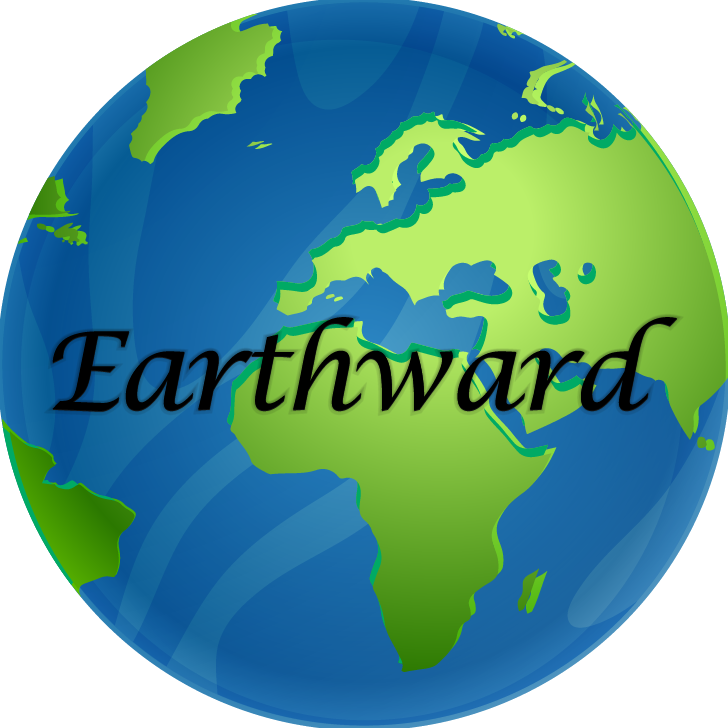Accelerated melting of sea ice, glaciers and ice sheets is among the most immediate consequences of global warming. An important benchmark for assessing these changes came two years ago, when the Intergovernmental Panel on Climate Change offered its latest synthesis of observations and computer modeling on how melting of Earth’s ice (the cryosphere) may progress in different future climate scenarios. Among its many findings, the IPCC reported that melting of the large Greenland and Antarctic ice sheets increased by six-fold and twenty-fold, respectively, between the 1990s and 2010s. It also projected that substantial additional melting of both sheets is inevitable, though the amount of mass loss and potential for complete disintegration depends on how much global warming occurs. If temperatures plateau between 2°C and 3°C higher than preindustrial levels, the most likely outcome given present climate policy, the panel found only limited evidence that the ice sheets will fully disintegrate over millenium timeframes – though this possibility increases at the higher end of the range. Other projected consequences of this much warming include the loss of 50-60% of glacier mass outside Antarctica, substantial melting of the top Arctic permafrost layer (with at least some additional carbon release), and likely disappearance of Arctic Ocean sea ice by 2050 during the seasonal minimum that occurs in late September of each year.
The IPCC communicates clearly on how much uncertainty there is in its projections, and we should appreciate that its confidence level about the cryosphere is generally not high. Reliable measurements of snow and ice volumes, glacier/ice sheet dynamics and melting rates can be sparse, reflecting the difficulty of making observations in harsh, remote environments. Computer modeling of the complex physical processes that underlie the breaking up of very large ice masses, such as the Greenland and Antarctic ice sheets, is also challenging. These realities underscore the ongoing need for improved instrumentation, more on-site experimental measurements and better integration of the cryosphere into computer models of the Earth’s climate system. Investment in these areas is indeed happening, with results apparent in the recent appearance of a spate of high-profile research papers. Much of the new data suggests that the IPCC has underestimated cryosphere impacts, although there is also reason for hope that the damage can be contained.
Most people notice global warming impacts on the cryosphere through its effects on mountain glaciers, which are small and very susceptible to climate change. Retreat and even full disappearance of glaciers in many parts of the world, especially at popular tourist sites like Glacier National Park and Mount Kilimanjaro, has certainly raised awareness of the problem. Five prominent new studies appearing in the last two months, however, focused more on the enormous Greenland and Antarctic ice masses at the Earth’s distant poles. Together, these two regions make up the majority of the cryosphere and, if fully melted, would produce over 200 feet of sea level rise. The ice sheets are so large that full melting would take millenia to occur even under very high emissions scenarios, yet the impact of even a small partial melting can hardly be ignored given how much trouble the current sea level rise of less than one foot has already caused. This makes it worthwhile for policymakers to pay close attention to climate scientists’ evolving understanding of how global warming is affecting these remote parts of the world.
The Antarctic ice sheet is divided into two parts that respond more or less independently to warming. The enormous Eastern half would produce about 175 feet of sea level rise if it fully melted, more than ten times as much as the much smaller West Antarctic Ice Sheet (WAIS). The East side had not been thought to be affected much by global warming yet, with some studies showing that increased snowfall, which becomes compacted into ice, has more than compensated for any increased melting. However, one of the new studies, a collaboration between Norwegian and Australian teams, looked for the first time at a nine-year oceanographic record of temperatures below the largest floating ice shelf extending from the shore of Queen Maud land, a sector comprising about one-sixth of East Antarctica. The record showed an influx of relatively warmer water that explained satellite measurements showing that the rate of ice melting from the bottom of the shelf had doubled during this time. The teams were also able to connect these experimental data to an increase in westerly winds that circulate around the South Pole, revealing an important coupling of ocean and atmosphere dynamics. This work raises no immediate red flags, but does suggest that increased attention to East Antarctic contributions to sea level rise is warranted.
The other Antarctic study, however, is ringing alarm bells. Applying a new suite of computational models, UK researchers found that global warming will likely cause a rapid temperature increase in the Amundsen Sea, which borders the smaller and more precarious West Antarctic sheet. The most striking aspect of these findings is that the consequent increased melting of this sheet is not lessened by aggressive emissions cuts consistent with Paris agreement targets. As in the East Antarctic, the susceptibility of the WAIS comes from warmer deep ocean currents and melting from the bottoms of the floating ice shelves in the Amundsen Sea, which in turn opens paths for melting of the parts of the sheet that lie on land. In their sobering conclusion, the authors state that “the opportunity to preserve the WAIS in its present-day state has probably passed,” and recommend increased attention to adaptation as a policy response to sea-level rise. In other words, very substantial WAIS melting is now baked in no matter what we do. The authors do not go so far as to suggest a detailed timing or precise extent of melting, which is appropriate given that internal, natural climate variability is also important. However, they do state that we should prepare for several meters of sea level rise from the WAIS in the coming few centuries. Full melting of this ice sheet would raise sea levels by about 5 meters, or 17 feet.
Two of the three new studies of ice loss from Greenland also catalog increased melting. The two studies looked, respectively, at over 1000 peripheral glaciers scattered around the island’s coast, and at large inland glaciers that form the ice sheet in the northern part of the island. The study addressing peripheral glaciers is particularly interesting because it exploited the discovery of a large treasure trove of over 200,000 old aerial photographs, acquired by the Danish government during exhaustive mapping carried out in the 1930s. By comparing these photographs with contemporary satellite observations, the collaborative Danish and American team could determine that, over the past two decades, these ocean-bordering glaciers have been retreating twice as fast as they did in the 20th century.
Earlier measurements had shown that the northern part of the Greenland ice sheet was more resistant to melting than the more southern regions, where temperatures are higher. However, this new study reports that substantial melting in the north is now also under way. The accelerated melting from previously stable northern glaciers was shown to arise from the full collapse of three ice shelves extending from the northern coast, as well as from accelerated melting from the bottoms of five other still-existing shelves – a mechanism similar to what was found in Antarctica. In both regions, we clearly see that floating ice shelves extending away from the coastlines melt first, removing an important buttress that had limited the melting of the much larger adjacent glaciers on land.
These four papers, while focusing on a different remote parts of the cryosphere, each deliver the same urgent message about the need to curtail anthropogenic climate change. The fifth paper, though, takes a very different approach. Here, a team of UK and European climate scientists began by noting that present policies are not enough to prevent very substantial cryosphere melting, so they instead designed a study that imagines a climate future where the 1.5°C Paris target is exceeded, but the Earth is later cooled back down by large-scale atmospheric carbon removal. The team focused on the Greenland ice sheet, which would generate 23 feet of sea level rise if fully melted. This would dump huge amounts of fresh water into the Northern Atlantic Ocean, disrupting a current known as the Atlantic Meridional Overturning Circulation, with potentially far-reaching effects on weather and ocean ecology.
Previous work on the Greenland ice sheet has shown that it is susceptible to runaway disintegration: initial melting reduces the height of the sheet, and the higher temperatures at lower elevations then lead to faster and faster melting as the height continues to decrease. In the new study, computer modeling shows that this melting transition will be triggered when temperatures reach 1.7°C – 2.3°C above preindustrial levels. The amount of melting depends on how high temperatures ultimately get, and a key finding is that subsequent cooling below 1.5°C within a few centuries allows the ice sheet to substantially reform. The large size of the ice sheet means that it exhibits inertia, and does not fully melt when the transition temperature is reached. This gives a time window for atmospheric carbon removal, during which only partial melting and thus more modest sea level rise occurs. The ice sheet can substantially reform upon recooling even for a 6°C increase in temperature above preindustrial levels, but rebuilding of the sheet does not follow the same pathway as melting, and some of its present volume is permanently lost. The dynamics of sheet melting allow the authors to propose safe scenarios: as expected, lower peak temperature and faster subsequent atmospheric carbon removal leads to less melting and smaller sea level rise.
The potential for atmospheric carbon removal to reverse Greenland ice sheet melting, even if the transition temperature is surpassed, could help motivate investment in nascent technologies to make this a reality. Direct air capture (DAC) of CO2 coupled to safe geologic sequestration, in particular, would be a vast improvement over some other proposals, such as stratospheric sulfur aerosol injection to cool polar regions, or gargantuan engineering projects to build artificial embankments that might trap runoff and promote formation of new buttressing glaciers. But the financial and energy costs of DAC or other carbon removal technology are, of course, directly related to how much overshoot we allow. The urgency of addressing the worsening climate emergency is not diminished because this work offers a possible lifeline to mitigate one of the more horrific outcomes. Let’s instead use this study to inspire hope, as we continue efforts to restrain warming as much as we are able.
___________________________________
https://www.ipcc.ch/report/ar6/wg1/chapter/chapter-9/
https://www.frontiersin.org/articles/10.3389/fclim.2021.689823/full
Michael Mann, Our Fragile Moment (PublicAffairs, 2023). https://www.hachettebookgroup.com/titles/michael-e-mann/our-fragile-moment/9781541702899/?lens=publicaffairs
https://nsidc.org/arcticseaicenews/2023/10/
https://www.nature.com/articles/s41558-023-01818-x
https://www.nature.com/articles/s41561-023-01273-5
https://www.nytimes.com/2023/11/09/climate/greenland-glaciers-ice-melt.html
https://www.nature.com/articles/s41558-023-01855-6
https://pubmed.ncbi.nlm.nih.gov/37935697/
https://www.nature.com/articles/d41586-023-03250-9
https://www.nature.com/articles/s41586-023-06503-9
https://www.pnas.org/doi/epdf/10.1073/pnas.2024192118
https://agupubs.onlinelibrary.wiley.com/doi/full/10.1029/2023EF003679
https://repository.library.noaa.gov/view/noaa/20812/noaa_20812_DS1.pdf

